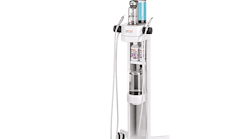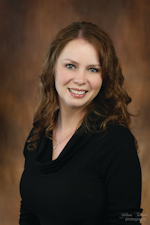Guided biofilm therapy (GBT) changes the conventional practices of preventive therapy we were taught in school by removing biofilm with air polishing using a low-abrasion powder prior to power and hand scaling. A specific sequence of steps ensures patient comfort along the way. Biofilm management is crucial in dental hygiene preventive care.1
A little hygiene history
Dr. Alfred C. Fones made history in 1906 by recognizing the need for preventive oral care and training his cousin to provide education and preventive care to patients. Dr. Fones has been credited with founding the practice of dental hygiene and eventually opening the first formal dental hygiene school in 1913, paving the way for hundreds of thousands of hygienists worldwide to follow. Hygienists were taught to scale first to remove hard deposits prior to polishing. The same protocol has been used throughout the years.
What is guided biofilm therapy?
Guided biofilm therapy changes the conventional protocol by introducing air polishing to remove biofilm before scaling, which reduces the amount of scaling necessary. As a hygienist of many years, I had a hard time wrapping my mind around a new protocol that was different from what I learned in school. After attending a seminar and talking to other providers, I decided to give GBT a try. I was impressed with the results and the positive feedback I received from patients. GBT is based on a specific sequence of treatment steps. However, it is not a rigid protocol; rather, it is adaptive to unique treatment needs. Scaling, polishing, and flossing rituals are replaced with selection of the appropriate powder for individual patient needs. Efficacy of care is maximized by changing the treatment sequence to optimize results and patient comfort.
Understanding dental biofilm and guided biofilm therapy
Erythritol powder is preferred for biofilm and stain removal. It is safe for both supra- and subgingival use and provides increased patient comfort over other powders. Among the benefits of erythritol powder are the anticariogenic and antibiofilm properties that glycine powder does not possess. Erythritol has been proven to inhibit growth mechanisms in various types of bacteria. It is less abrasive than glycine due to its small particle size of 14 microns, and is harder, so it is very effective for stain and biofilm removal.2
Glycine is still a great product and should be the choice for patients with an allergy or sensitivity to sugar alcohols. Sodium bicarbonate should be used only for patients with heavy stain because of its abrasive properties. It should never be used for patients with white spot lesions or implants. Powders differ in density, particle size, hardness, and abrasion, and they should be used only with the unit that are compatible.
The GBT sequence provides a minimally invasive method that begins with assessing the patient’s needs. Hygienists have always discussed patient needs and concerns at each visit while creating an optimal plan for treatment. We have been trained throughout the years to scale, polish, and floss at each preventive visit, and patients expect the same. They will often question the hygienist if a routine is performed out of the order they have come to expect.
Since GBT protocol rearranges our treatment protocols, we must educate our patients, letting them know that we are doing things a little differently than before. Since adopting the GBT method of treatment and asking patients if we can try a different sequence of steps, I have found that patients are very willing and happy with the new treatment outcomes. Some perceive it as cutting edge. Many patients have noted the warm water that the new EMS unit expels with both the Piezon and Airflow tips, and they remark on the resulting clean feeling.
Disclosing products
After graduation, many hygienists omit the use of disclosing products. We are accustomed to seeing biofilm formation and calculus through the magnification of our loupes and under a light. Handing patients a mirror and expecting them to interpret what they see without disclosing is like handing them plans for a rocket and expecting a successful launch. Remember the importance of patient education. Disclosing plaque allows patients to see the biofilm and allows us to effectively remove it with GBT. Many people are visual learners and are impressed to view the disclosed areas via intraoral camera images on the computer monitor. It is especially effective on patients with orthodontics, but remember that disclosing solution may stain ceramic brackets, so exercise caution.
Implant care
Implant care can be a challenge for hygienists, but great improvements in instruments and procedures have improved the odds of maintaining implants over time. Five to 10 percent of dental implants fail within the first 10 years of placement.3 Peri-implantitis is a real concern for patients who have invested so much time and money into replacing one or more teeth, and they tend to blame the dentist for failure. Instrumentation around a dental implant is tricky at best, and trying to remove the biofilm layer can be even tougher. I once had a dentist explain implant maintenance using the analogy of an “orange on a popsicle stick” when trying to stress the importance and difficulty of cleaning around the shapes of implants.
Professionally removing biofilm around an implant body is extremely difficult without the aid of a power scaler and air polishing device. Never use sodium bicarbonate powder on implants as it may alter the surface of the implant body, leading to future complications. Plastic implant scalers have been replaced by titanium implant scalers in conjunction with power scalers and airflow devices. With all the combined tools at our disposal, we can help our implant patients successfully maintain their investments.
Adopting the protocol
When I adopted the GBT protocol, I found the use of Airflow tips for stain removal in tight contacts and a crowded dentition prior to scaling drastically lessened both the amount of scaling needed and the difficulty of trying to adapt the scaler interproximally. For periodontal pockets and root furcations, you can use a Perioflow tip to reduce biofilm subgingivally. Patients report it to be more comfortable and gentler than scaling when used in conjunction with erythritol powder. At the hands-on GBT seminar I had attended, we were able to use the Airflow device to remove the brown color from the shells of quail eggs to demonstrate how gentle and powerful the combination of Airflow and erythritol powder can be. This simple exercise was incredibly impactful for me. If it doesn’t break the egg and can be effective enough to remove the spots from an eggshell, it was worth my time and the learning curve to try it in private practice.
When adopting the GBT method, the biggest change in your usual protocol is the use of the Piezon to remove hard calculus deposits after removing the biofilm via the Airflow. These deposits are more easily recognized once the biofilm layer has been removed both supra- and subgingivally. Follow the power scaling by checking for residual calculus, and then hand scale as needed to fine-tune and complete the GBT protocol. Less time is needed for hand scaling when you are only scaling for hard deposits versus all deposits including biofilm.
A significant benefit of removing biofilm first via air polishing versus hand scaling is reduced hand and wrist fatigue. This is an ergonomic lifesaver for many who suffer from musculoskeletal disorders. One study reported 60% to 96% of hygienists suffer with either hand, neck, shoulder, back, or wrist pain, or a combination of aches and pains.4 Decreasing scaling—especially when it comes to patients who are periodontally compromised or have heavy stains—sounds like a dream, and your hands will rejoice!
As a hygienist who was a firm believer in the power scale—hand scale—polish—floss mentality that I was taught in school, I was reluctant to consider changing the way I practiced and, to be honest, I was skeptical. Getting past the mental hurdles that come with change, I did my research prior to trying the GBT protocol for the first time. Once implementing it, I found that GBT offers a faster and more comfortable way to treat my patients, in addition to reducing hand fatigue from repetitive scaling. Patients have raved about the process and how clean their teeth feel during and after the new protocol. Happy patients equates to more referrals!
References
1. Sculean A, Bastendorf KD, Becker C, et al. A paradigm shift in mechanical biofilm management? Subgingival air polishing: a new way to improve mechanical biofilm management in the dental practice. Quintessence Int. 2013;44(7):475-477. doi:10.3290/j.qi.a29615
2. de Cock P, Mäkinen K, Honkala E, Saag M, Kennepohl E, Eapen A. Erythritol is more effective than xylitol and sorbitol in managing oral health endpoints. Int J Dent. 2016;2016:9868421. doi:10.1155/2016/9868421
3. Tabanella G, Nowzari H, Slots J. Clinical and microbiological determinants of ailing dental implants. Clin Implant Dent Relat Res. 2009;11(1):24-36. doi:10.1111/j.1708-8208.2008.00088.x
4. Kanji Z. The impact of occupation-related musculoskeletal disorders on dental hygienists. Can J Dent Hyg. 2016;50(2):72-79.
Jamie Collins, RDH-EA, is a practicing clinical hygienist in Idaho and Washington states. She has been in the dental field for nearly 20 years, both as an assistant and hygienist. With a passion for patient care, especially for those with higher risk factors, she enjoys sharing the tips and tricks of the dental profession through speaking and writing. In addition to being in clinical practice, she is also an educator, has contributed to multiple textbooks and curriculum development, and is a key opinion leader. She can be contacted at [email protected].







